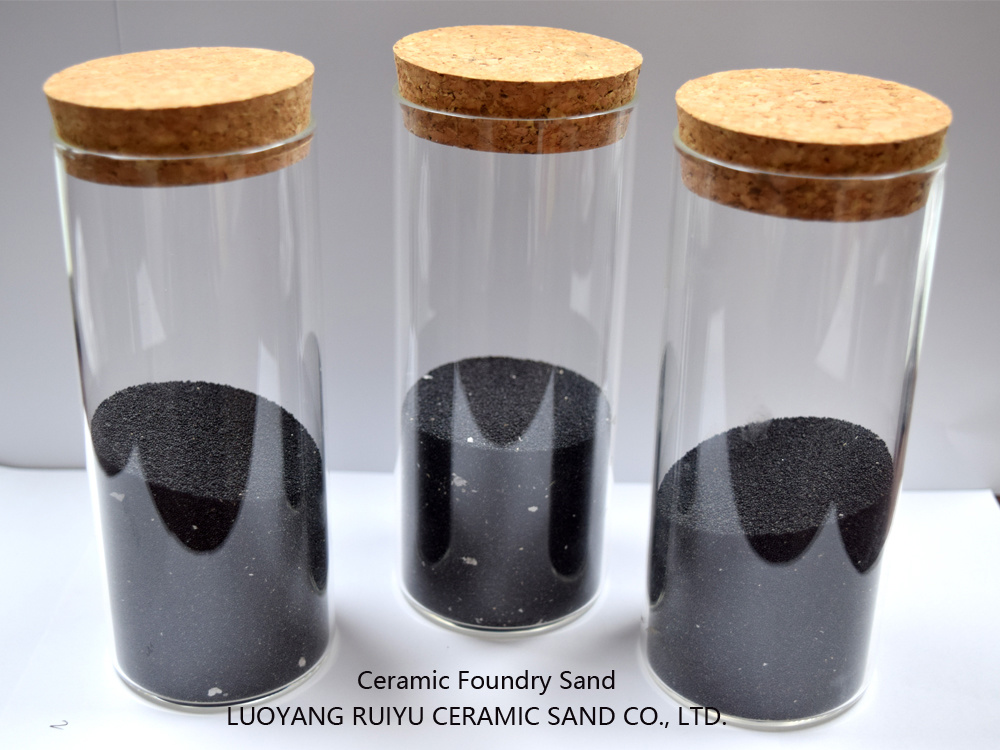Why do we use ceramic foundry sand in precision casting ? As is well known, in the process of casting at high temperature, because of the thermal expansion of molding sand, it is easy to cause a small change in the size of molding sand, and then affect the precision of casting size and the appearance and performance of castings. At the same time, if the thermal expansion coefficient of molding sand is too large, it will cause sand inclusion, scab, rat tail and other casting defects. A variety of factors make foundry enterprises more cautious in choosing molding sand, not only considering the thermal expansion coefficient of molding sand, but also taking into account the cost of molding sand. Artificial foundry sand-ceramic sand could solve these problems very well.

Ceramic foundry sand produced by Luoyang ruiyu is a new type of foundry material, suitable for a variety of casting environment; Compared with the traditional foundry sand, ceramic foundry sand has many advantages, which make up for the casting defects in the traditional casting, and effectively improve the casting yield.
With the development of lost foam casting, there are many problems, such as how to reduce the cost of castings, how to improve the rate of finished products, how to improve the quality of castings and so on. In the past, foundry factories generally used cheaper sand, such as quartz sand, red sand, sea sand and so on, to control the production cost.
This kind of sand has low price, low refractoriness, poor fluidity and air permeability, which lead to many casting defects, such as sand penetration, sand caking, difficult cleaning of casting burrs, casting cracks and other common problems; Therefore, manufacturers can only cast some products with low precision requirements, but can not produce castings with high precision requirements.
The casting material-ceramic foundry sand is a good solution to these above casting defects. Ceramic foundry sand has many advantages, such as high refractoriness, strong fluidity, good air permeability and so on. The previous casting defects such as sand inclusion, blowhole, scab, rat tail and so on have been well solved by ceramic sand. This has greatly improved the quality of castings.
The comparison between ceramic sand and traditional sand as follows:
1.Refractoriness
The traditional sand has low refractoriness between 1400-1700 ℃; Because of the low refractoriness, the sand in pouring is partly melted, and the phenomena of mucilage, sand adhesion and sand inclusion are common; After pouring, it needs a lot of manual cleaning and grinding.
After switching to ceramic sand, the phenomenon of sand penetration and sand inclusion completely disappear. With the refractoriness above 1800 ℃, the ceramic foundry sand will not melt, and it is not easy to form adhesive sand; The casting is formed at one time without grinding, thus improving the yield.
2.Air permeability
In traditional sand casting, the gas can not be discharged, resulting in a large number of scabs on the casting. In the process of pouring, a large number of gases generated by high temperature can not be discharged, scarring, gas holes, inadequate pouring and other phenomena often occur, and the rate of finished castings is not high;
This phenomenon has been improved after using ceramic foundry sand. Because the particles of ceramic foundry sand are spherical and there is a gap between the particles, a large amount of gas can be discharged from the gap, which improves the yield of castings.
3.Fluidity
The traditional foundry sand particles are polygonal sand with poor fluidity, scarring and rat-tail; Ceramic foundry sand is a kind of round shape, which has strong fluidity and is easy to be filled, thus effectively improving the rate of finished products.
4. The thermal expansion rate
The traditional casting sand has low refractoriness and high thermal expansion coefficient, which lead to low casting accuracy; With high refractoriness and low thermal expansion coefficient, ceramic foundry sand produce high casting accuracy, which further improve the casting yield.
5. Recycle and reuse
The traditional foundry sand has low strength, high breakage rate and high rate of waste sand; With stable ball shape and high Mohs hardness ceramic sand is not easy to break; This effectively reduces dust pollution and increases the recovery and reuse rate of the sand.








